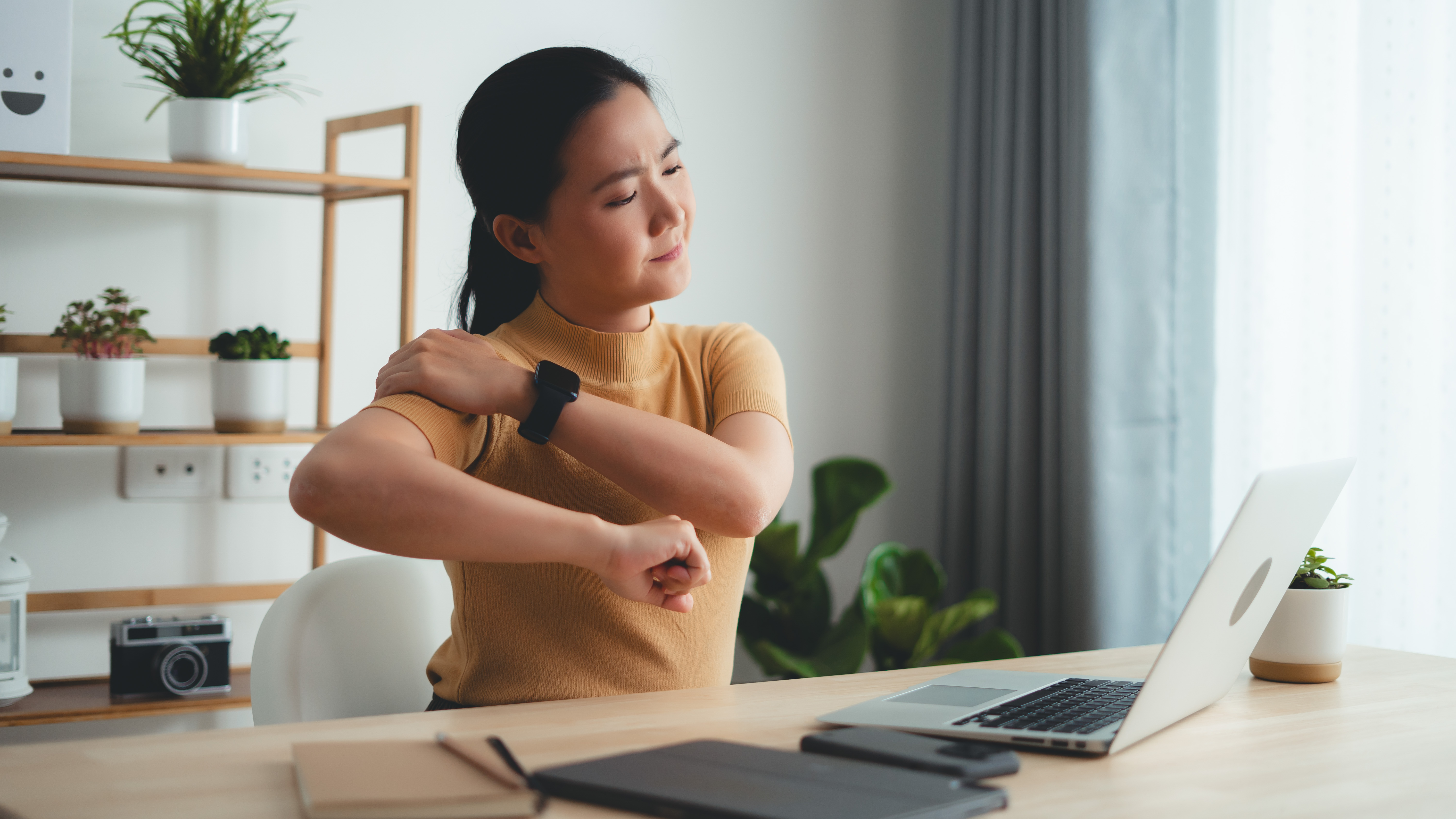This is the one move a physical therapist recommends for people who sit a lot and suffer from shoulder pain
All you need is a resistance band

Shoulder pain can be frustrating, especially if you're dealing with a niggle that just won't go away. But it's common for people who work desk jobs and are constantly hunched over laptops.
Stretching the shoulder muscles can help relieve tension, but you should try strengthening the area too if you want to get rid of the achiness for good.
Sanjit Kooner is a physical therapist who regularly deals with clients experiencing shoulder pain, and he says there's one underrated exercise he always recommends: face pulls.
"Banded face pulls are a great way to target the scapulohumeral stabilizers [a group of muscles that stabilize and control the shoulders], especially the posterior rotator cuff," he explains.
This exercise pulls your shoulder blades back and together, putting you in the opposite position of a typical hunched-over sitting posture
"Face pulls are especially useful for improving posture, shoulder function, and long-term injury prevention—particularly in people who sit a lot or do overhead training," says Kooner.
How to do face pulls with rotation
A post shared by Physio San (@physio_san_)
A photo posted by on
You'll need a long resistance band to do the move, although Kooner suggests practicing without it first to build control and awareness of the muscles involved in the movement.
Start your week with achievable workout ideas, health tips and wellbeing advice in your inbox.
Sets: 3 Reps: 10-12
- Attach your resistance band to a fixed surface—something heavy, like your couch or bed, or a squat rack if you're at a gym. You can do the exercise seated or standing, but make sure the band is secured at chest height.
- Next, grip the band and move away from the anchor so that your arms are extended there’s some tension in the band. This is your starting position.
- Pull the band towards your shoulders and up, finishing with your hands above your head and a 90° angle in your elbows. Adding this rotation at the end of the move helps activate the rotator cuff.
- Return to the starting position with control.
"You can adjust the difficulty by changing the band’s resistance or your hand placement," says Kooner.
He also suggests focusing on pulling your shoulder blades in and slightly down during the exercise, which will help activate additional muscles that support the shoulders, including the infraspinatus, teres minor, and mid/lower trapezius.
Alice Porter is a freelance journalist covering lifestyle topics including health, fitness and wellness. She is particularly interested in women's health, strength training and fitness trends and writes for publications including Stylist Magazine, Refinery29, The Independent and Glamour Magazine. Like many other people, Alice's personal interest in combining HIIT training with strength work quickly turned into a CrossFit obsession and she trains at a box in south London. When she's not throwing weights around or attempting handstand push-ups, you can probably find her on long walks in nature, buried in a book or hopping on a flight to just about anywhere it will take her.
You must confirm your public display name before commenting
Please logout and then login again, you will then be prompted to enter your display name.